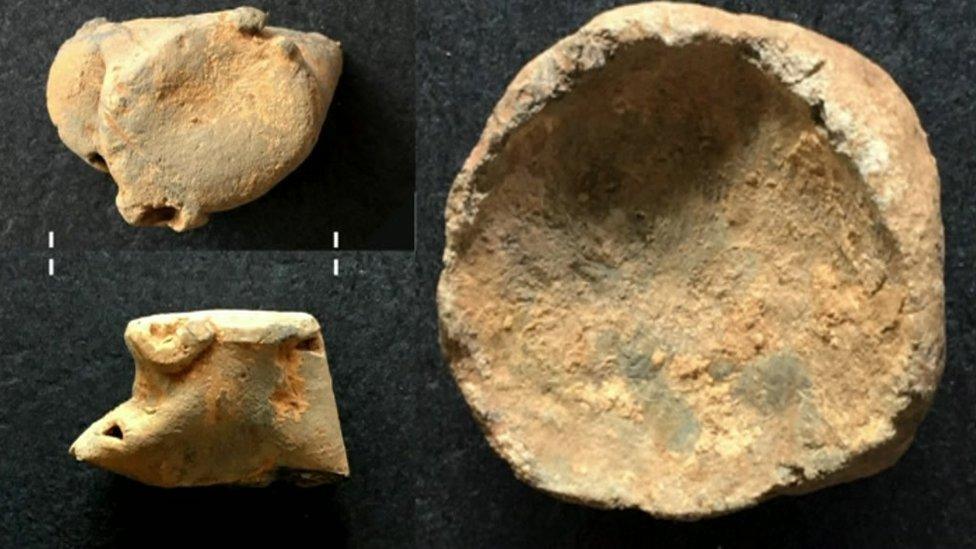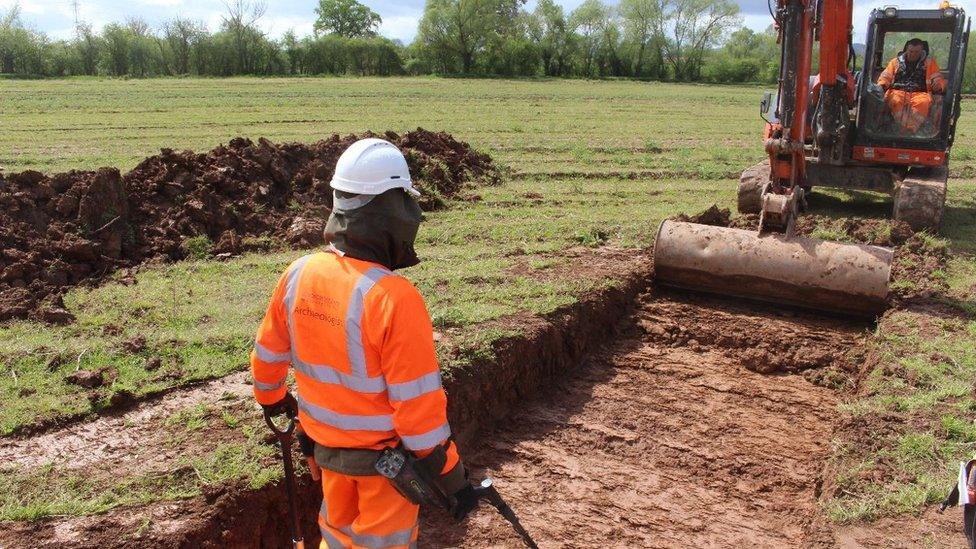English Civil War artefacts found for the first time in Worcester
- Published
- comments

The artefacts were found buried deep at the bottom of a river valley in Worcestershire
Artefacts from the final battle of the English Civil War have been unearthed for the first time, after building work exposed a new area of land.
The exciting finds are from the Battle of Worcester which took place in September 1651.
Musket balls, horse harness fittings and belt buckles were found at the battle site in Powick, Worcestershire close to Powick Church.
Historians already knew the area was the site of the 1651 battle, but this is the first time artefacts like this have ever been found.

This illustration shows King Charles II when he returned to the throne over a decade after the civil war
The 98 finds were found buried deep at the bottom of a river valley, covered by soil, clay and gravel that slowly covered the area during flooding over the hundreds of years since the battle.
The finds show the battlefield site was further south than previously thought.
The conflict was actually a series of civil wars between people who wanted the country to be run by Parliament and those who wanted to King or Queen to have full control.
It started in 1642 and ended in 1651. Although usually called the English Civil War, it was a much wider conflict also involving Scotland, Ireland and Wales.
The first and second wars involved King Charles I, while the third, saw fighting between supporters of King Charles II and supporters of the Parliament.
The war ended on 3 September 1651 when the Parliamentarians defeated the Royalists and captured the King.
Richard Bradley, on-site lead archaeologist, said it was "fantastic" to be able to find and map the physical remains of the battle.
He said: "The construction work has given us the opportunity to investigate the floodplain across which thousands of infantry and cavalry engaged, and to get down to the level where artefacts were deposited.... these tangible signs of the conflict offer a poignant connection to the soldiers who fought and died here."

The construction teams were able to use their equipment to help the archaeologists out with the dig
Richard Shaw, chairman of the Battle of Worcester Society, said: "How exciting that 368 years after the Battle of Worcester these artefacts should be discovered.
"We are sure that there was fighting at this location on 3rd September 1651.
"The discoveries really bring the events of that day to life."
- Published11 June 2019

- Published13 November 2018
- Published10 April 2013
